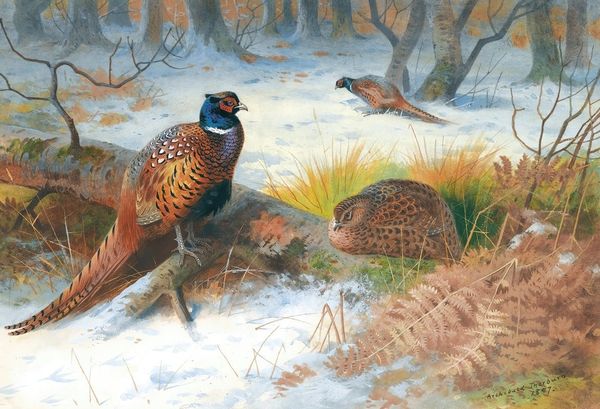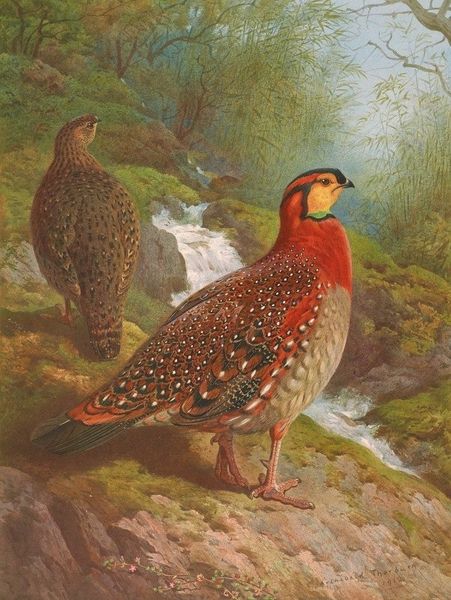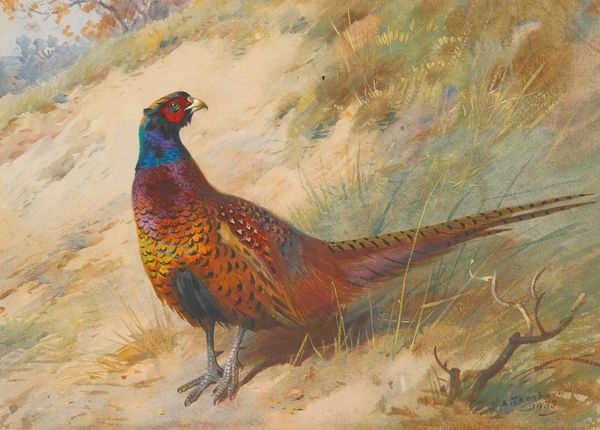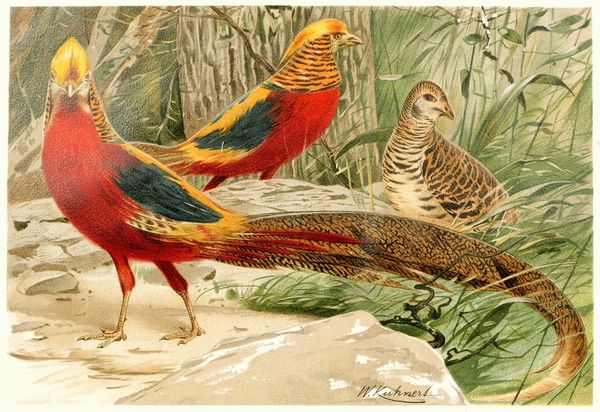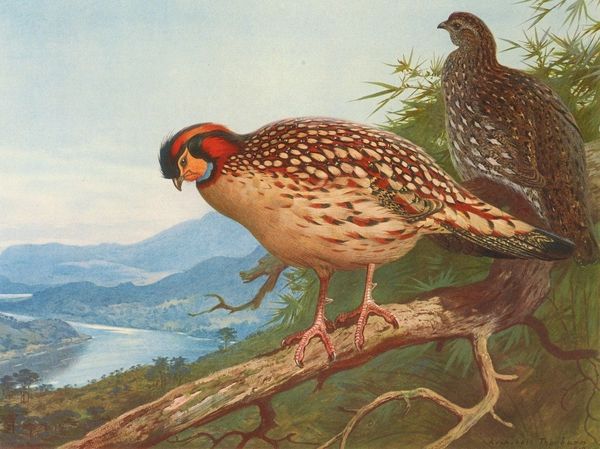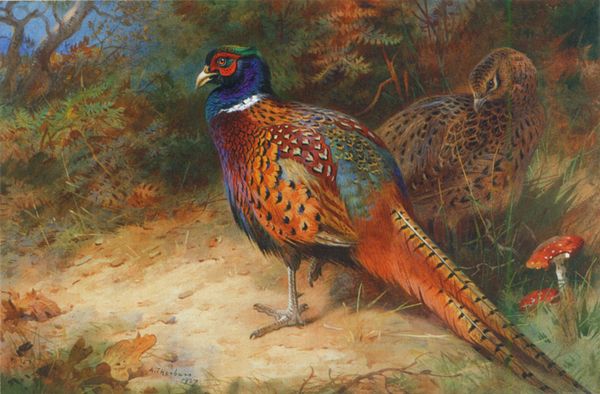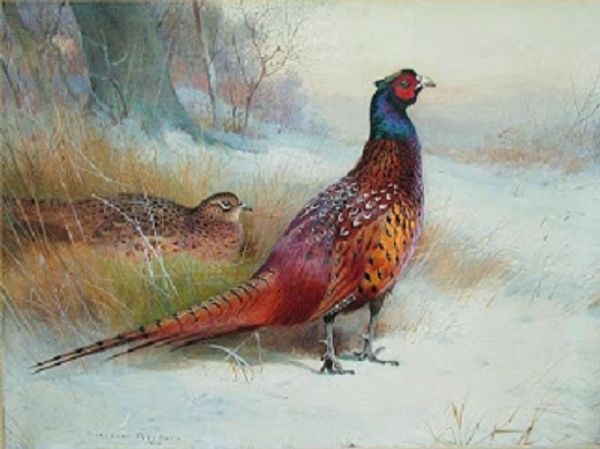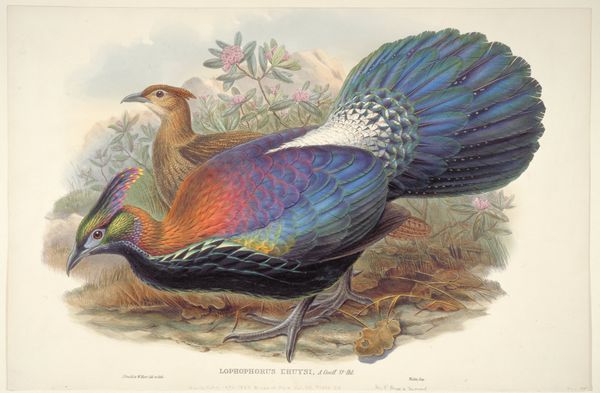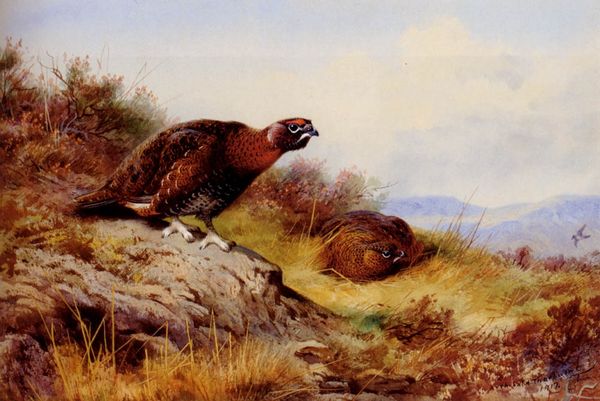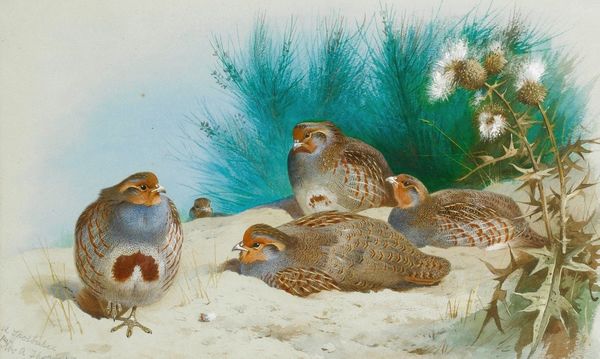
Copyright: Public Domain: Artvee
Editor: This is Archibald Thorburn's watercolor, *Kuser’s Blood Partridge*, painted sometime between 1918 and 1922. It's a strikingly detailed painting of a vibrantly coloured bird in a snowy landscape. I'm immediately drawn to the almost photographic quality of the bird's plumage. What can you tell me about this work? Curator: It's interesting you note the "photographic quality," because it points to the tension of scientific illustration, artistic representation, and the culture of hunting that informed much ornithological art. How do you see this piece functioning within the history of natural history illustration? Does it challenge or reinforce existing norms? Editor: That’s a really insightful question! It seems to me that it kind of sits on the fence. There is clearly a high degree of scientific observation at play, evident in the feather detailing, but the slightly soft focus in the landscape lends it an artistic, even sentimental, touch, distancing it from pure documentation. Curator: Precisely. This duality raises the question of the role these images played beyond simple identification. How were such images consumed and what societal values did they reflect, especially given the era? Thorburn made many similar works, usually for wealthy landowners. How do you think these paintings influenced attitudes toward conservation or, perhaps, hunting practices at the time? Editor: Hmm, well, if it’s hanging in the home of a landowner, the aesthetic beauty may soften attitudes toward preserving their habitats and could encourage responsible management of game populations for sport, possibly raising concerns over who gets to control nature? But, truthfully, it's hard to know for sure! Curator: It is, but your intuitions are precisely the kinds of questions historical analysis invites us to ask. These paintings offer insights into the complex interplay of art, science, and power during that period. Editor: I never considered the political undercurrents within what seemed to be just a beautiful bird painting. I have so much to think about.
Comments
No comments
Be the first to comment and join the conversation on the ultimate creative platform.

